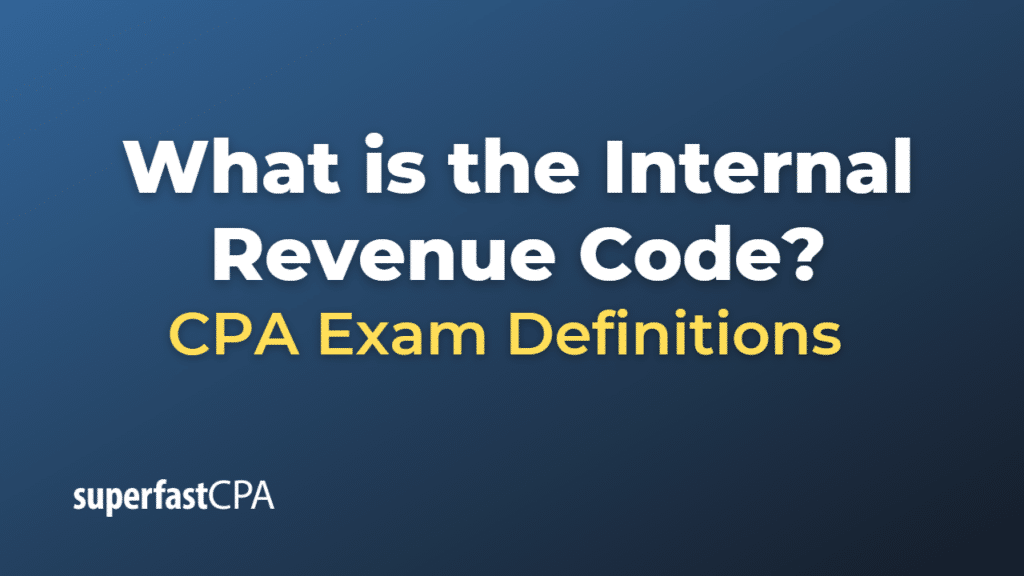Internal Revenue Code
The Internal Revenue Code (IRC), formally the Internal Revenue Code of 1986, is the domestic portion of federal statutory tax law in the United States, published in various volumes of the United States Statutes at Large, and separately as Title 26 of the United States Code (U.S.C.).
The IRC is organized topically, covering all relevant rules pertaining to income, payroll, gift, estate, excise, and sales taxes, among others. It is arranged in five subtitles, which are further divided into chapters, subchapters, parts, subparts, sections, and subsections.
Key sections of the Internal Revenue Code include:
- Subtitle A: Income Taxes – Covers rules on the taxation of income. This includes the tax rates applicable to different levels of income, the types of income that are taxable, the types of expenses that can be deducted, and the credits that can reduce a taxpayer’s liability.
- Subtitle B: Estate and Gift Taxes – Covers rules on the taxation of estates and gifts.
- Subtitle C: Employment Taxes – Contains rules on Social Security and Medicare taxes, as well as federal unemployment tax.
The IRC is enacted by Congress, and the specific provisions can be changed through legislation. It is administrated by the Internal Revenue Service (IRS), which is a part of the Department of Treasury. The IRS also issues regulations and guidance to help interpret and apply the IRC.
Example of the Internal Revenue Code
Let’s take a look at a specific example from the Internal Revenue Code, Section 179.
IRC Section 179 is an example of a specific provision in the Internal Revenue Code that allows businesses to deduct the full purchase price of qualifying equipment and/or software purchased or financed during the tax year.
This is how it works:
- A company buys or leases a piece of qualifying equipment in 2023.
- Let’s say the cost of this equipment is $50,000.
- Under Section 179, the company can deduct the full cost of the equipment (up to a certain limit) in 2023.
- Instead of depreciating the equipment over its useful life (say 5 years), Section 179 allows the company to get the full deduction in the year the equipment is placed in service.
- This can significantly reduce the company’s taxable income for the year and hence its tax liability.
The goal of Section 179 is to incentivize small businesses to invest in themselves with capital expenditure. The limits for Section 179 are generous, but they do exist. As of my knowledge cutoff in 2021, the deduction limit was $1,050,000 and the limit on total equipment purchases was $2,620,000. After that, the deduction decreases dollar for dollar.
This is just one example out of thousands of sections in the Internal Revenue Code. Each section is designed to address a specific area of tax law, and collectively, they make up the entire federal taxation system in the U.S.
Please note that tax law is complicated and can change from year to year, so it’s always best to consult with a tax professional about your specific situation.













